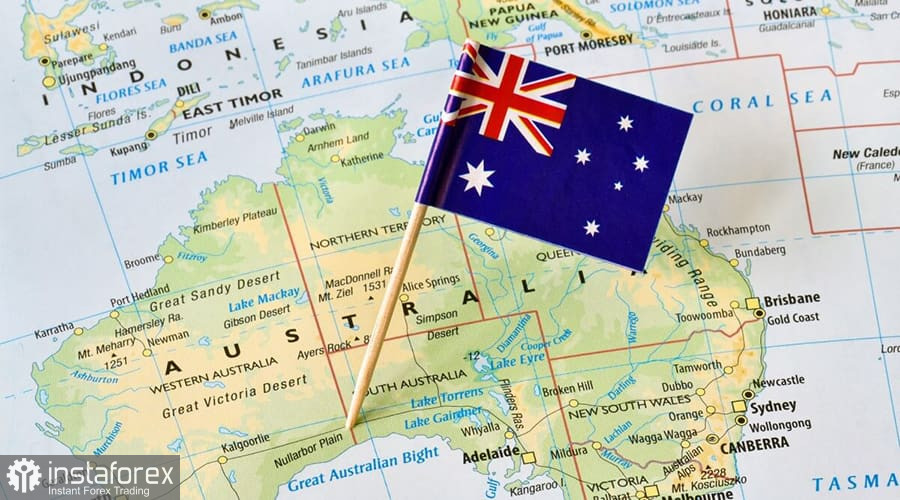The AUD/USD pair showed increased volatility on Thursday. Traders of AUD/USD are struggling to determine the direction of the price movement. During the Asian session on Thursday, the pair hit a three-day low, dropping to 0.6571. However, the bearish momentum faded by the European session, and buyers took over. The pair has returned to the 66-level and is attempting to develop an upward trend.

It's all because of the "Australian Non-Farms". The key labor market data from Australia released on Thursday failed to provide clear support for the aussie, although I think AUD/USD buyers are clearly underestimating this report. Only the headline figure, which is a lagging indicator, was disappointing. All other report components came in "in the green," significantly exceeding forecasts.
For instance, employment increased by nearly 60,000 (58,200) in July, a figure almost three times the consensus forecast of 20,000. Remember, last month's figure was double the forecast, reaching 52,000. This indicator has been on an upward trajectory for the fourth consecutive month, a stark contrast to the almost 6,000 decrease in March. The July result is the strongest since February.
But that's not all. The report's structure indicates that the increase in employment in July was solely due to a rise in full-time employment (60,500). The part-time employment component came in negative (-2,300). A similar picture was observed last month: part-time employment increased by only 6,800, while full-time employment rose by 43,300.
It's a known fact that full-time positions generally offer higher wages and better social security compared to temporary jobs. An increase in full-time employment will likely boost Australian consumer activity and accelerate inflationary indicators. This bodes well for the aussie in the current scenario.
Another component of the report also came out in the green zone. Australia's labor force participation rate rose to 67.1% (the previous value was 66.9%). This is the highest value for this indicator since November 2023. The indicator has shown an upward trend for the fourth consecutive month.
The headline figure was the only component that came out in the red zone. The unemployment rate increased to 4.2%, compared to the forecast of 4.1%.
Overall, the July labor market report is significant. It can now be confidently said that the Reserve Bank of Australia (RBA), at its next meeting, will not only maintain all monetary policy parameters unchanged but will also refrain from softening its rhetoric. The Australian Non-Farms should be considered in conjunction with the inflation report. According to the latest data, the overall Consumer Price Index (CPI) accelerated to 3.8% year-on-year in the second quarter. The indicator had shown a downward trend for the past five quarters but unexpectedly accelerated in the second quarter. On a quarterly basis, CPI remained at the same level, i.e., 1.0% (as in the first quarter).
Now, strong employment data has been added to the inflation figures. This combination of fundamental factors indicates that the RBA will maintain the status quo not only in September but likely in subsequent meetings in 2024 as well. The central bank is unlikely to return to discussing a hawkish scenario (at least until the release of inflation data for the third quarter) but will undoubtedly declare a wait-and-see position.
In other words, on Thursday, the aussie received a significant fundamental boost, given that the Federal Reserve will undoubtedly start easing monetary policy in September (the only question is how much the rate will be lowered). This means we can now discuss the first signs of divergence between the Fed and the RBA's policy stances.
The evolving fundamental picture supports further growth of the Australian dollar. However, the aussie has one weak link: China. Macroeconomic weakness in the People's Republic of China could curb the growth of AUD/USD and even apply pressure on the pair. Thursday's price decline during the Asian session was partly a response to mixed reports from China. Notably, investment in fixed assets increased by only 3.6% in July (forecast was 3.9%), marking a fourth consecutive month of decline. Industrial production in China rose by 5.1% (forecast was 5.2%), while retail sales data came out in the green zone: the volume increased by 2.7% (forecast was 2.6%, the previous value was 2.0%). Reacting to these reports, the aussie saw a sharp drop but rebounded fairly quickly.
Overall, the AUD/USD pair, in my opinion, retains potential for further growth, given the broad weakness of the U.S. dollar (due to slowing inflation in the U.S. and rising dovish sentiment regarding the Fed's future actions) and the strengthening of the Australian dollar (boosted by strong employment data and rising inflation). Long positions should be considered after the pair breaks above the upper line of the Bollinger Bands on the four-hour chart (0.6650). The next target for the upward movement is 0.6710: at this price point, the upper boundary of the Kumo cloud aligns with the upper line of the Bollinger Bands on the daily timeframe.
 English
English 
 Русский
Русский Bahasa Indonesia
Bahasa Indonesia Bahasa Malay
Bahasa Malay ไทย
ไทย Español
Español Deutsch
Deutsch Български
Български Français
Français Tiếng Việt
Tiếng Việt 中文
中文 বাংলা
বাংলা हिन्दी
हिन्दी Čeština
Čeština Українська
Українська Română
Română

